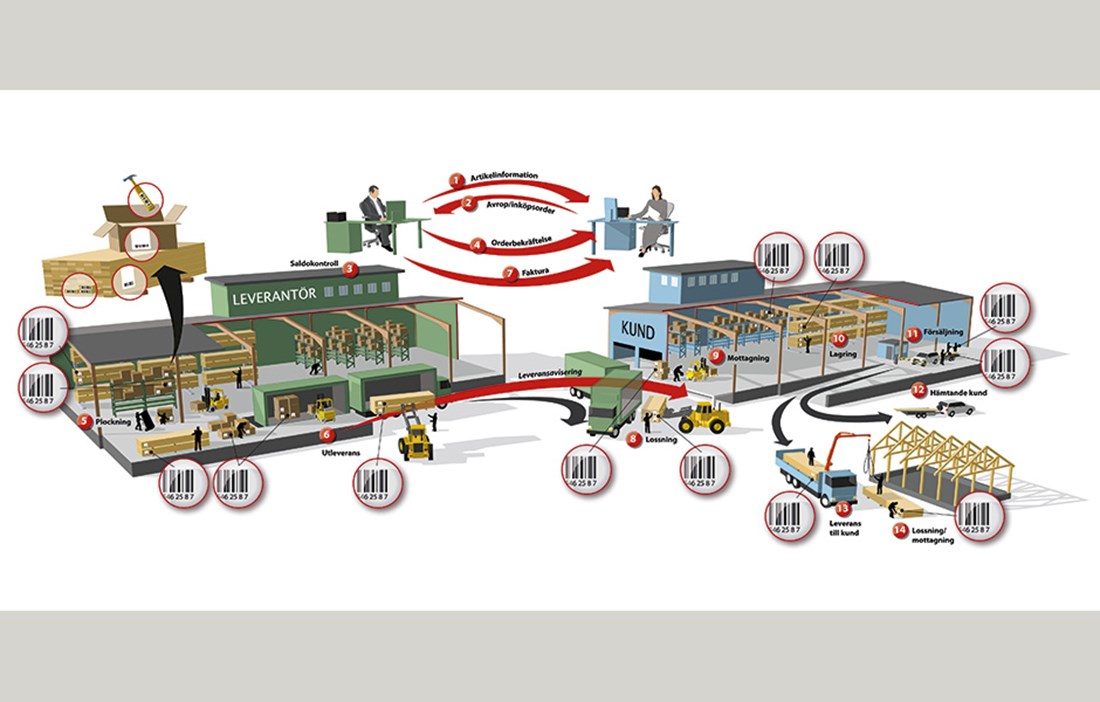WOOD IS A natural material, whose properties vary depending on where it is grown, when it is harvested, and how it is processed, stored and handled. There are also a number of products produced according to local tradition and demand.
As such, there is no common approach for article numbers, designations and properties when it comes to sawn timber.
“Ordering sawn timber has previously been a little like ordering a car without really knowing what you’re going to get,” believes Christer Green, project manager for VilmaBas. “Will it be a BMW, Volvo or Fiat? It’s no longer a case of simply ordering a piece of ‘two by four’. The focus is on much more defined products. What we do is allow you to compare like with like.”
The purpose of VilmaBas has thus been to describe the properties of a base range of the most common standard products. But also in the long term to create an international standard for barcoding and a standard for digitally describing and communicating product and property information.
“This is an important development issue for the industry and in the end it’s about increasing the attractiveness of sawn timber products and making the business processes more efficient. A property declaration for each product is a guarantee that the product really meets the necessary criteria. This delivers quality assurance for the entire supply chain and provides a much more defined product,” says Christer Green.
During 2014, VilmaBas will be employing information and skills development activities to promote its basic range to architects, designers and contractors. A new website will also be set up, with links to a database. The database functions will make it searchable and create the ability to define the product’s properties. From the website, it will also be possible to download the timber profiles as CAD files.
KATARINA LUNDEBERG IS an architect and partner at In Praise of Shadows Arkitektur. With the help of her descriptions and the expertise of the timber merchants, she is confident that the products delivered mostly match what was ordered. However, she does feel there is an element of uncertainty when it comes to ordering sawn timber that VilmaBas is able to eliminate. This uncertainty essentially comes down to the fact that wood is a living natural material, and that there are many different commercial grades of wood products.
“We’re choosy, always demanding high quality, not least when it comes to sawn timber. As an architect, I like the idea of a system that guarantees the timber I choose will match the quality and properties of the wood that will be used on the construction site. This provides assurance for the whole chain, from me as the architect via designers, planners, contractors, builders’ merchants and producers, all the way to completion of the project and handover to the client.”
Another advantage mentioned by Katarina is the greater efficiency in the planning phase that VilmaBas is able to achieve.
“Once the system is connected to our CAD software, I’ll be able to enter a particular grade for the products and then see it specified in a final order list. The properties are described according to a new standard that in the future will ensure clarity in all documentation.”
SETRA, ONE OF SWEDEN’S largest wood industry companies, was among the first producers to be certified by VilmaBas as a wood supplier. Urban André, product manager for Setra’s engineered range, puts their decision to become certified so quickly down to customer demand.
“We felt considerable pressure from our customers, and we naturally wanted to react accordingly. But I also think being certified has brought great benefits internally. A standardised range makes communication with our customers about a product’s properties much easier, we can always refer them to VilmaBas and there is never any doubt as to what product we’re talking about.”
Urban and his colleagues took part in a Vilma course, where they were taken through how the system works and what requirements are placed on them as suppliers. Then all that remained was to set the wheels in motion, a process that involves two stages. The first stage is the actual certification, which shows the company is able to deliver article information in line with the Vilma criteria. In stage two, the supplier adapts its products to the VilmaBas range.
“I’d say it took us about three months to become certified. The work has carried on since then, and still continues as we gradually adapt our products and the range expands.”
Text Katarina Brandt





















